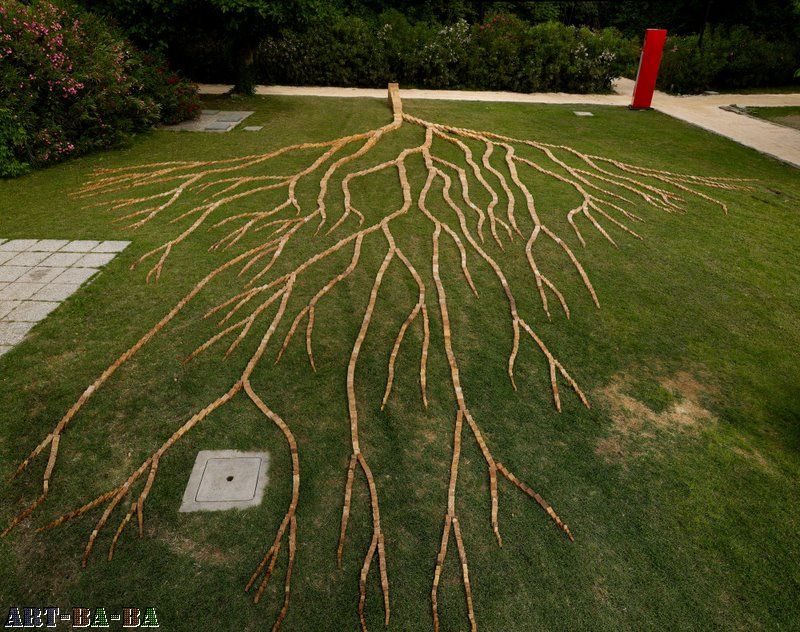The five-months Venice Biennale titled "Making Worlds" already started a few weeks ago...China's Ministry of Culture has appointed artist Lu Hao as the curator of the Chinese pavilion, the theme being "What is to come." It comes from a popular saying by the ancient philosopher Han Feizi. The idea is to look for clues to the future or an entire situation in the start of something or a small part of it.
According to Lu Hao, half of the selected artists are well known in the international art scene, while the other half are known in China only, and should be known abroad as well. For him, this latter represents the new generation of Chinese contemporary art. Through this selection, he wishes to present the evolution of contemporary art in China. He also emphasized the fact that he isn't a critic or a curator but an artist, which made his choices different from the previous Venice Biennales.
"The 45th Venice Biennale in 1993, probably constitutes the first time when Chinese contemporary art was presented on such a large scale to the international art scene", he says. “Even though, before that, Chinese contemporary art has already been shown in Western countries, as in 1989 with "Chinese Modern Art Exhibition" introducing works of Wang Guangyi, Zhang Xiaogang. Many international newspaper made some reports on it, but these articles were mainly news reports. It was only in the 45th Biennale that Western world really started to be interested in Chinese contemporary art, inviting it to participate according to the Western rules of the game. However the chosen curator made a selection according to some cliches as: marginal culture and cold war. [...]” (Lu Hao)
EXHIBITION VIEWS:
Buffet

Fang Lijun's work: "2009.3.23", sculptures
Displayed in the main corridor of the “depot” (Chinese pavilion).
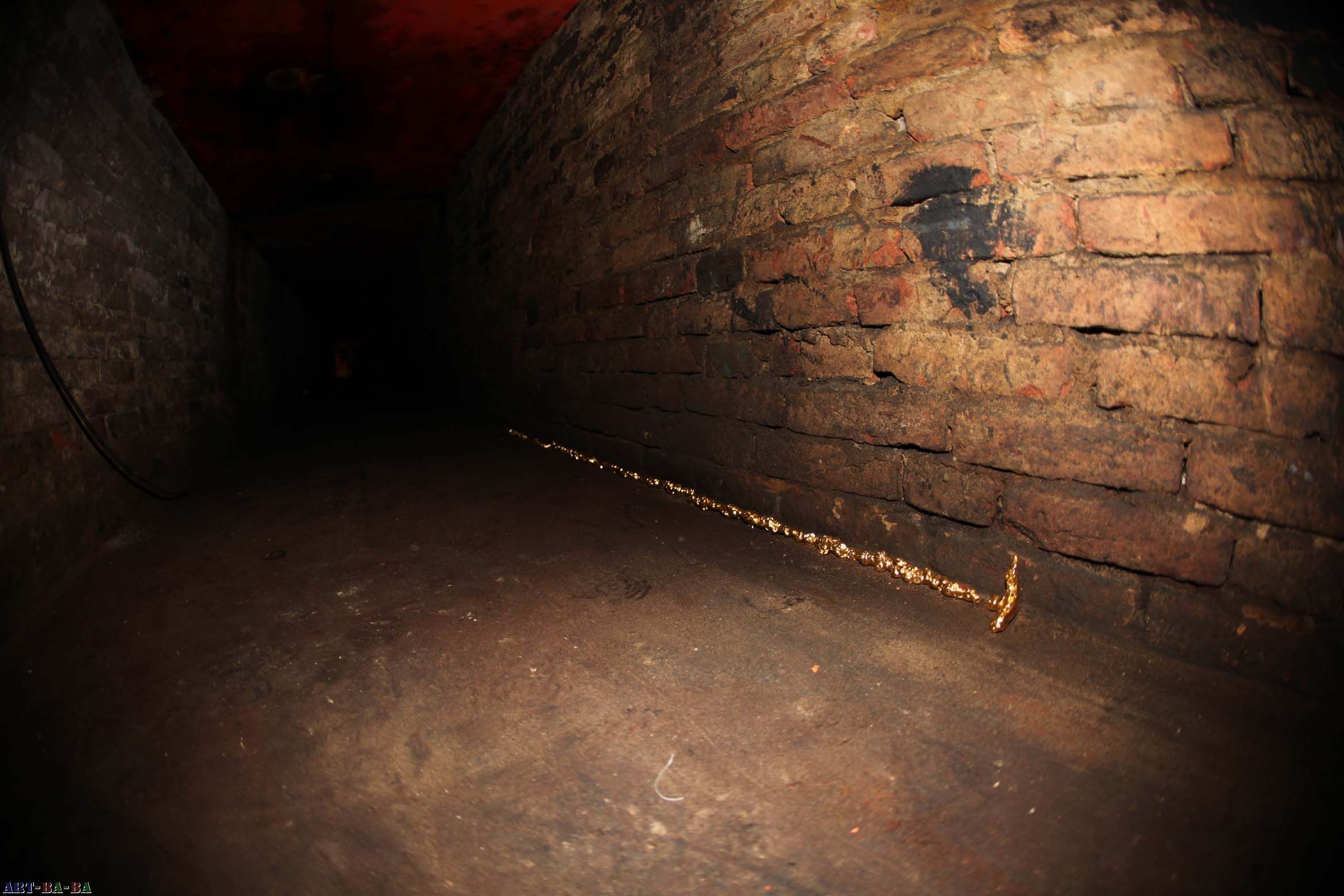
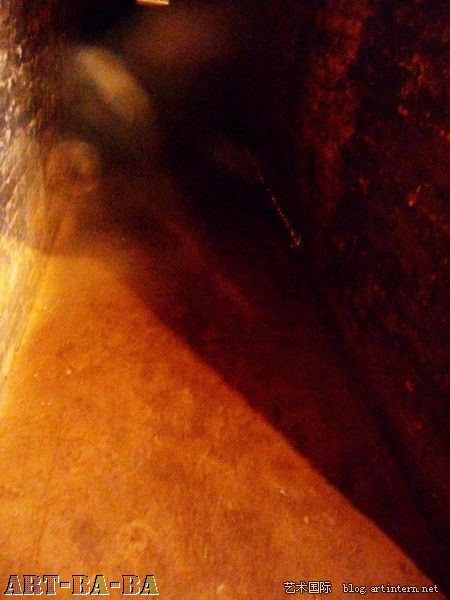
Fang Lijun's work responded to the indoor space of the Chinese pavilion, attempting to overcome the spatial limits and creating a special visual effect. The work consisting in forty mini golden sculptures also reflects the artist's usual reflection on human survival.
Qiu Zhijie's work: “Dominoes: from small to large”, wood installation
Displayed in the Vigrin Garden.
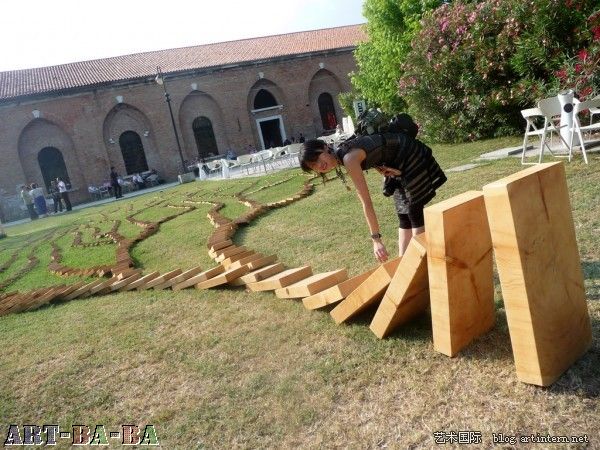


Qiu Zhijie’s work responded to the characteristics, grass and trees of the Virgin Garden, Chinese pavilion’s outdoor space. His installation consisted in many wooden dominoes (from small to large) forming a tree image when seen from above. Large dominoes stood for the roots – reaching one meter high and 50 cm wide – while smaller ones were displayed as “branches”, the smallest were as big as a matchbox. Tree’s growing veins could be seen on the surface of the dominoes with a circle in the center, as if a tree had been cut into slices. The layout of this big tree could be adjusted according to the site. During the opening, visitors were invited to push the dominoes so they would fall one on the other, changing the shape of the tree. According to Qiu Zhijie, this site specific work also reflected the outbreak of the financial crisis and constituted an artistic irony or metaphor of the Norwegian-style game.
He Jinwei's work: “Is the world in front of us real?”, painting, canvas, velvet.
displayed at the entrance of the “depot”.




Focusing on human survival and environmental changes, He Jinwei's work consisted in an installation titled "Is the World in front of us real?". It was composed of hundreds of 18 cm x 14 cm paintings which had been stitched together forming a large "World map": a combination according to our actual vision of our environment, with new judgements of the same codes, symbols and an interpretation of what's "real" and what's not.
He Sen's work, “”The supreme world” of the representing contract I signed with Liu Ding’s store”, painting, canvas, paper
displayed at the entrance of the main corridor of the “depot” and in Liu Ding’s exhibiting location.
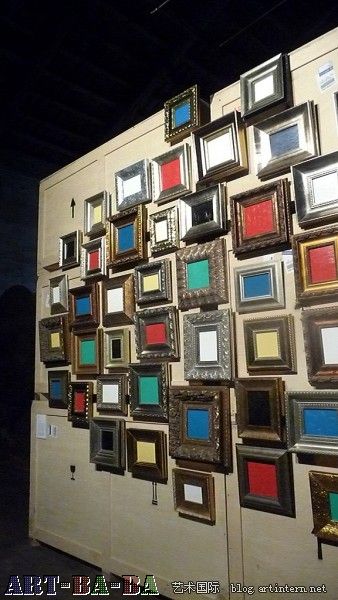
He Sen's work is composed of two parts: 1) He Sen composed 10 paintings of 10 cm x 20 cm, and combined them into an artwork sequence titled "Supreme World". The content reflected Chinese traditional culture. As they awee no color contrasts, and only very light pencil strokes, the whole painting resembled a geometrical form of a single color, the details could only be seen when close to the work. 2) The second part of the work consisted in a contract he signed with another participating artist, Liu Ding as a representant of his works.
Zeng Fanzhi's work, “Transformation plan – Changing the depot into a stack room.”, book, book shelves
displayed in the corridor of the “depot”.
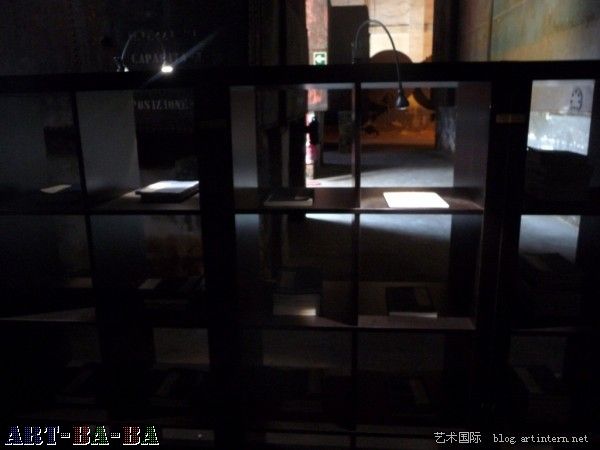
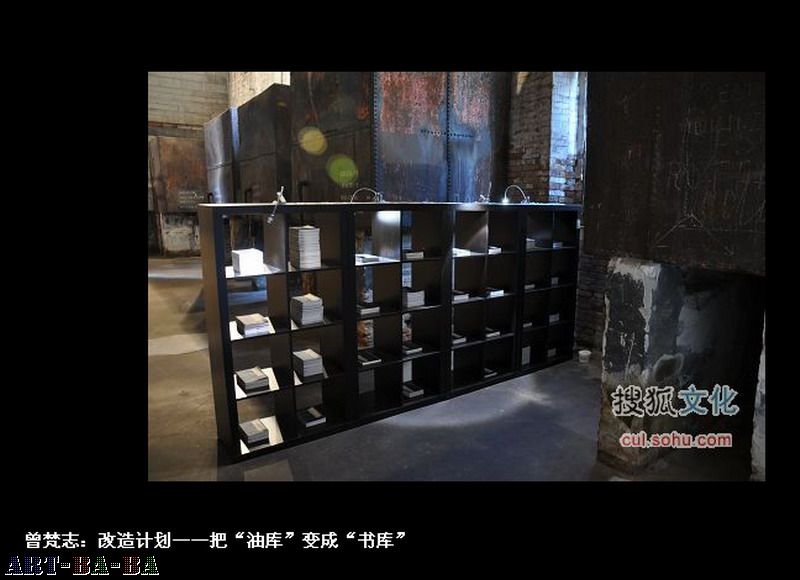
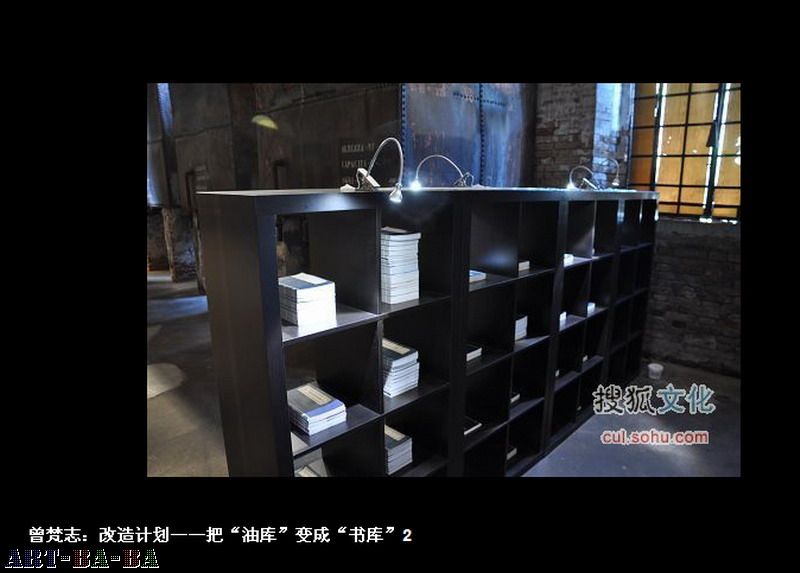
In order to use the space in an efficient way, Zeng Fanzhi anbandoned his usual media - painting - for installation. As a respond to the "depot" (Chinese pavilion) he built a "stack room". The artist collected Western and Chinese books on society, economy, culture, tore them into pieces and remounted them in books adding his own illustration, slogans, etc. Altogether 5 shelves of books were displayed.
Liu Ding's work, “Liu Ding’s store – Art utopian future, our reality”, installation including various artists’ works. 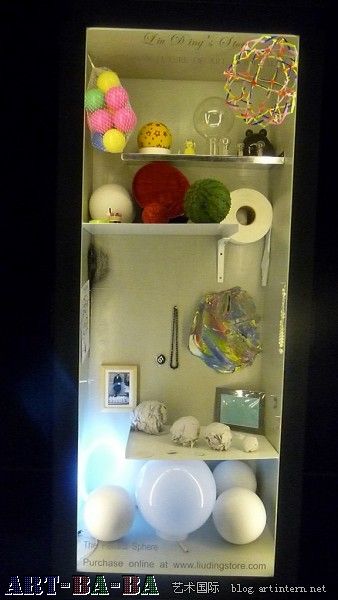
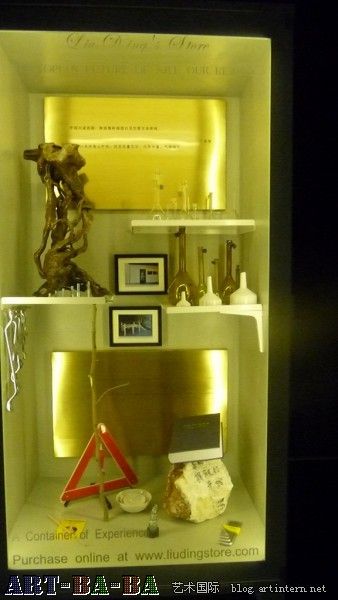
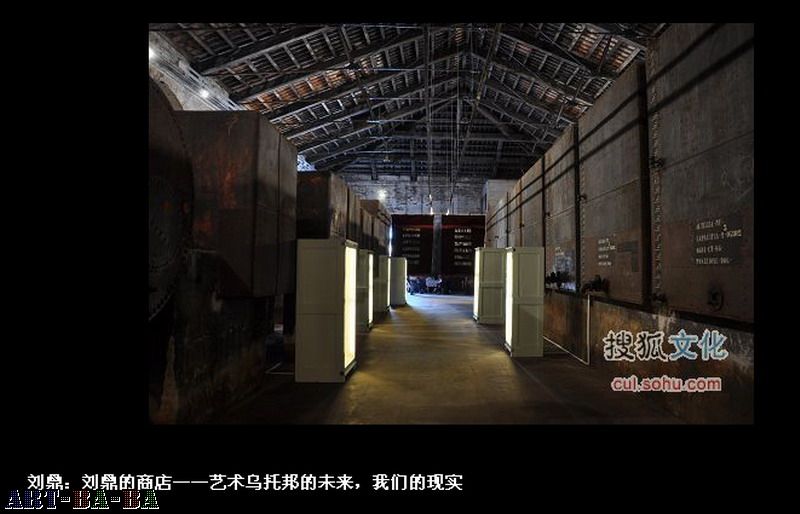
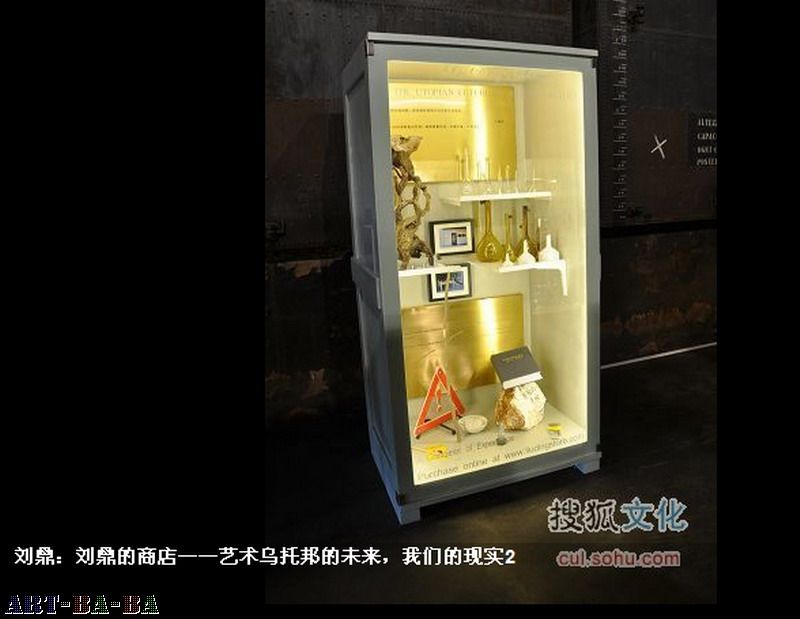
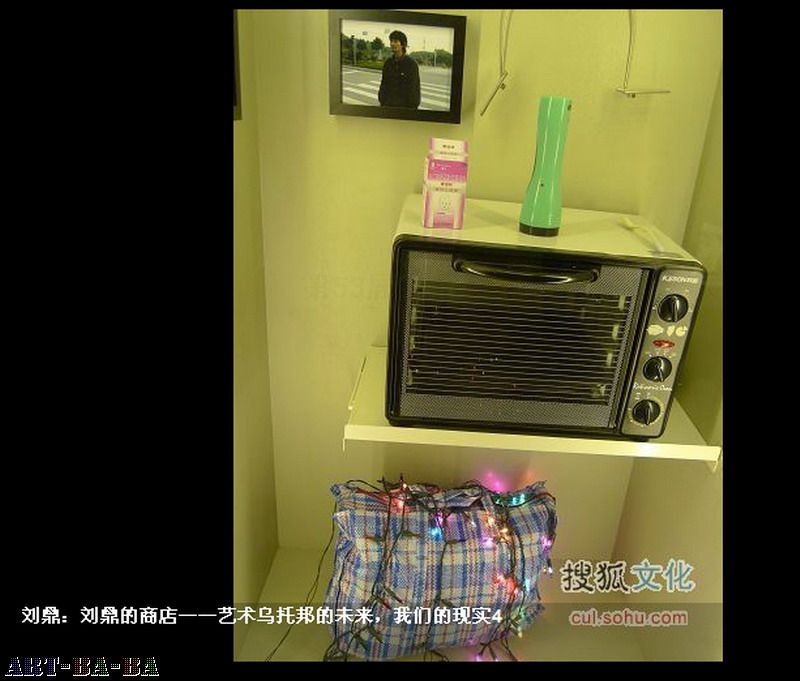
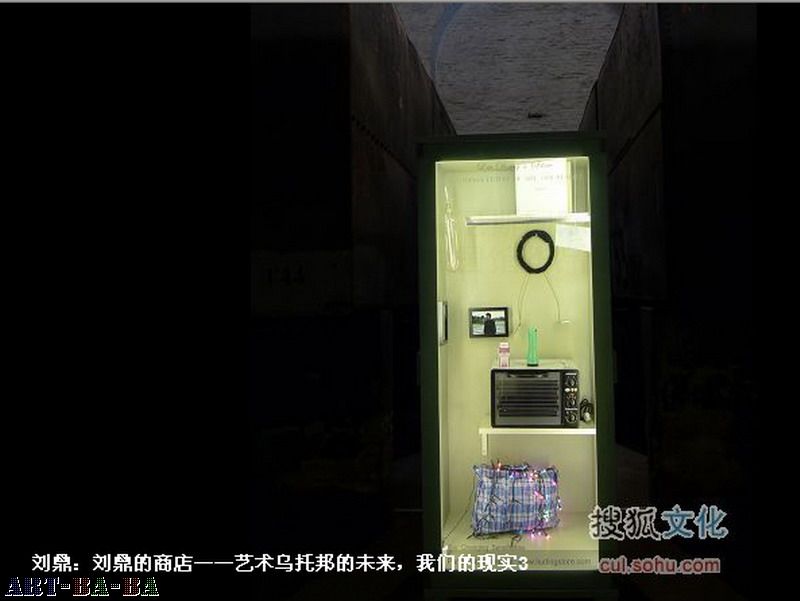
“Liu Ding’s Store” responded to the unlimited request that artworks should resemble more to artworks and other social realities such as the hierarchical system in the art world, by displaying together without differences artworks, crafts, design products and other objects. He attempted to use various economic strategies, such as one-on-one marketing model, etc to create a “new order” above social reality. His work also targeted the Venice Biennale art system which establishes levels standard and authority in the world.
Zeng Hao’s work: “2009-6-7”, installation.
Displayed in the Vigrin Garden. 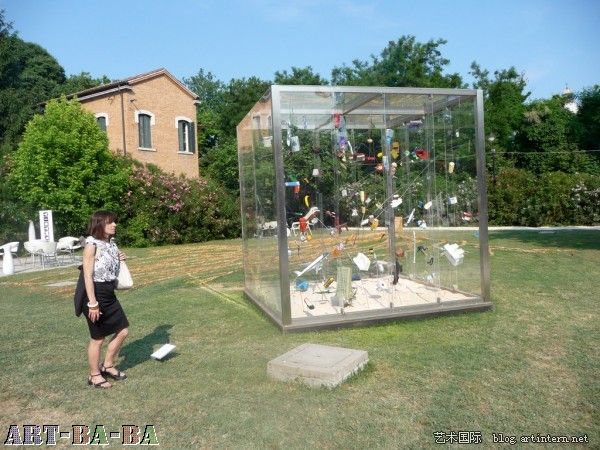
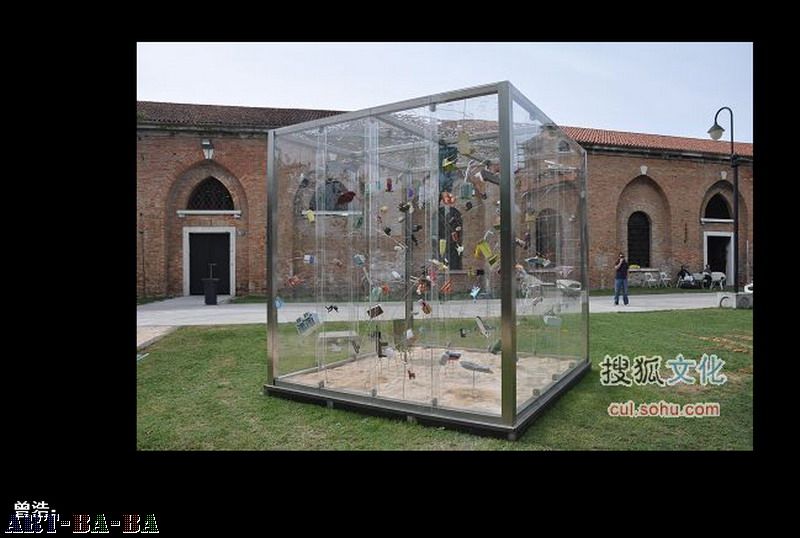
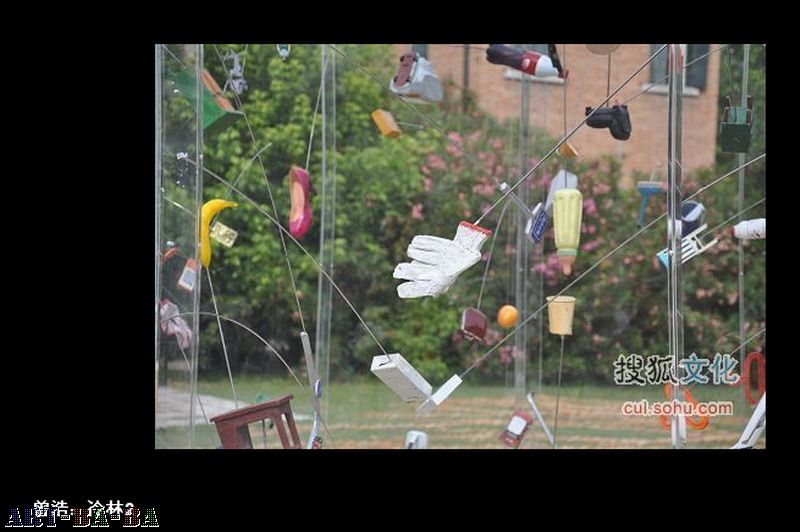
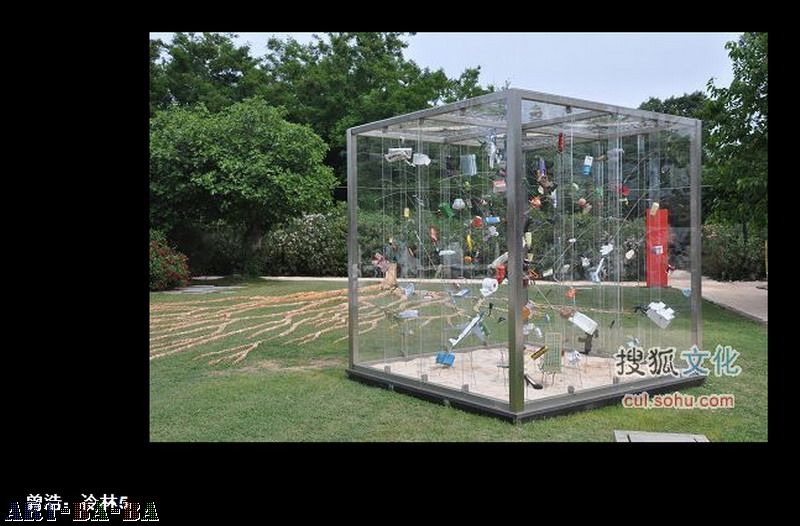
Zeng Hao also focused on the layout of the ground and produced his work in respond to the exhibiting site. Figures, sculptures and other small size objects composed a spatial structure, interacting each other, representing people in the present life, alienation with the outside world and emphasizing the importance of a cultural and emotional communication need.
Article from the "Oriental Morning Post"
For the third time China participated to the Venice Biennale, exhibiting in the “Arsenal” and the Virgin Garden. Due to the curator’s lack of academic competence, the exhibition level was very limited, according to some Chinese critics, the Chinese pavilion composed of 7 artists lordly became a “third-rate installation exhibition”
Participating artists, Zeng Fanzhi and Zeng Hao produced installations for the first time. Some art critics consider that - regardless of the cultural theme and the individual lack of research - having installations done by painters to represent the country is indeed not very appropriate. “The artists’ creation motivations are questionable, as if it wasn’t contemporary not to do an “installation”” said installation artist, Jiang Chongwu. Some artists’ creations’ ‘contemporary’ aspect are also questionable: puting together some paintings, arrange them in a simple three-dimensional way, openly imitating British artist Diamen Hirst’s “Self-colonization”, but here it is in no way the installation language, these installation made by painters, close to students’ homework destroy the image of installation. “A painter’s achievement is a painting, and not a primary imitations of artistic language, what is strange is that all the installations made by these painters participated to the Venice Biennale, to present this Chinese un-strange phenomena in Venice is a bit irresponsible” said Jiang Chongwu.
Fang Lijun's work - details





